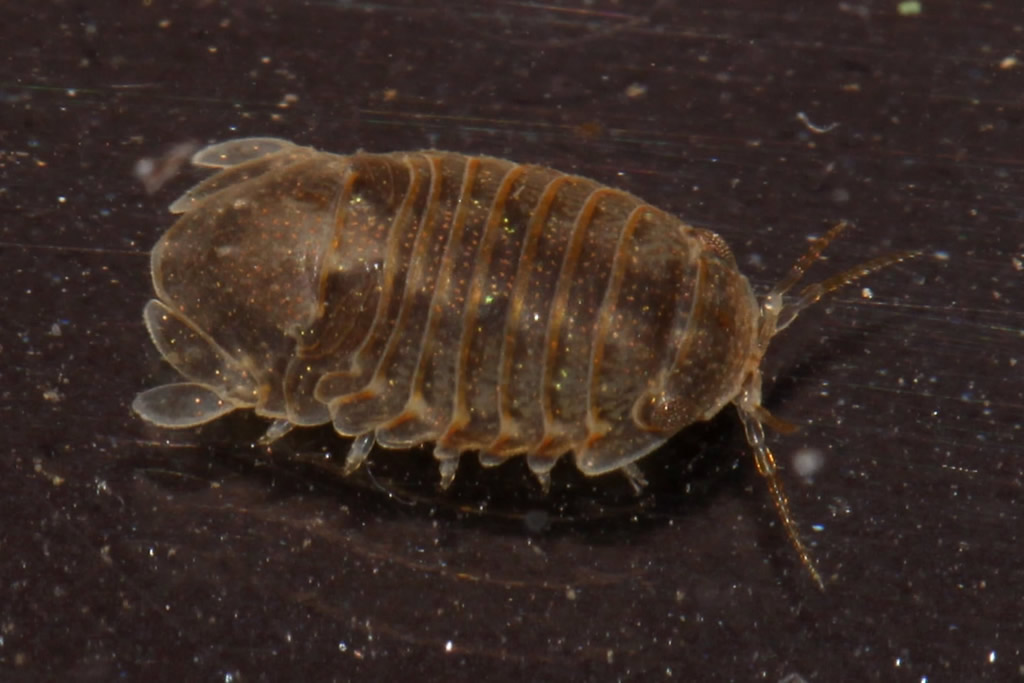Lekanesphaera hookeri (Leach, 1814)
Status:
Native
ID Difficulty
Identification
Members of the Lekanesphaera genus are pill isopods, the identification of which is somewhat more complicated than indicated in Naylor & Brandt (2015) and Hayward & Ryland (2017), not least because Naylor & Brandt do not include Lekanesphaera levii, whilst Hayward & Ryland leave out Lekanesphaera monodi. Although the patterning of tubercles on the pleotelson can be indicative of species, determination should be based on the patterning of setae on the first pereopod of mature specimens (Jacobs 1987).
The key identification features of L. hookeri are as follows:
- Pleotelson: usually characterised by two longitudinal rows of tubercles
- Uropods: fairly smooth, not distinctly toothed
- Ischium of the first pereopod: up to 20 smooth setae
- Merus of the first pereopod: up to 20 smooth setae
- Propodus of the first pereopod: lacking distodorsal setae
Males are up to 10.5mm, females up to 8.5mm.
Distribution and Habitat
This species occurs, at least patchily, around much of the coast of Britain (and presumably Ireland too), being found at EHWS in upper estuaries, river banks, ditches and channels in mud, under stones and amongst vegetation such as Estuary Wrack (Fucus ceranoides).
References
Hayward, Peter & John Ryland. 2017. Handbook of the Marine Fauna of North-west Europe (2nd Edition). Oxford: Oxford University Press.
Jacobs, B. J. M. 1987. A taxonomic review of the European, Mediterranean and NW. African species generally placed in Sphaeroma Bosc, 1802 (Isopoda: Flabellifera: Sphaeromatidae). Zoologische Verhandelingen 238, 3-71.
Naylor, E. & A. Brandt. 2015. Intertidal Marine Isopods. Synopses of the British Fauna (New Series), No. 3. Field Studies Council, for The Linnean Society of London.



